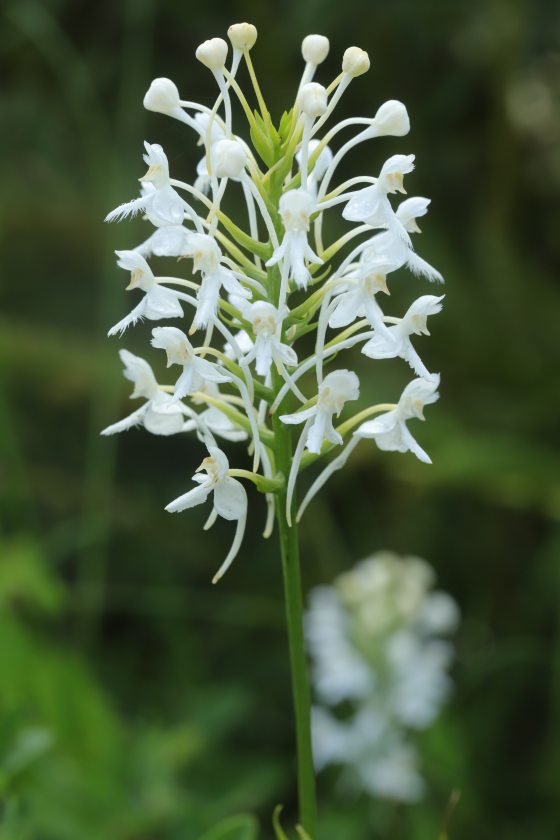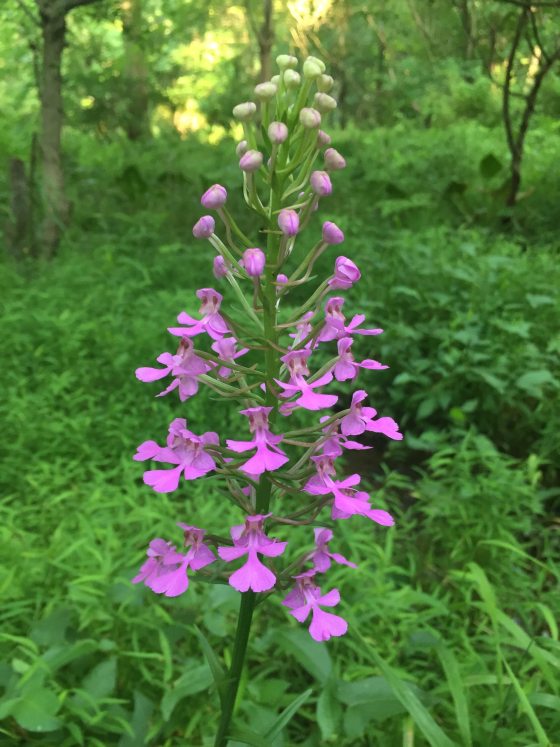
Preserving rare and endangered plants, also known as species of conservation concern, encompasses both the need to prevent the extinction of species, and to make sure that there is enough genetic diversity within a species so it can be resilient to future threats from pests, pathogens, or environmental changes.
We are committed to finding and saving these plants by working with partners around the globe to find, grow, and propagate threatened plants so they can thrive, ensuring continued plant biodiversity and healthy ecosystems.

Platanthera peramoena (purple fringeless orchid) is among the native plants we will be working to preserve in ex situ conservation. We chose this species because it is known to enter “prolonged dormancy,” a condition well-documented in orchids. This means it doesn’t appear or flower every year. We hope that our efforts to collect seeds of this species will provide an additional means of conserving this species and provide more information about its behavior. Photo by Peter Zale.
As we assess new species, we are identifying their conservation value. Some examples from our collection include:
- Appalachian Jacob’s-ladder (Polemonium vanbruntiae)
- box huckleberry (Gaylussacia brachycera)
- Canby’s mountain-clover (Paxistima canbyi)
- Kate’s Mountain clover (Trifolium virginicum)
- greater lady’s slipper (Cypripedium parviflorum var. pubescens)
- Kentucky lady’s slipper (Cypripedium kentuckiense)
- Leonard's witch-hazel (Hamamelis ovalis)
- mountain-parsley (Taenidia montana)
- purple fringeless orchid (Platanthera peramoena)
- showy lady’s slipper (Cypripedium reginae)
- spreading rockcress (Arabis patens)
- tuberous grasspink (Calopogon tuberosus)
- white fringed orchid (Platanthera blephariglottis)
- yellow fringed orchid (Platanthera ciliaris)
Conservation Spotlight: Leonard’s witch-hazel

While you may only think of rare and endangered plants in the Amazon rainforests or other remote parts of the world, endangered plants are everywhere.
One example is our work with Leonard's witch-hazel (Hamamelis ovalis), through a project led by members of the US National Arboretum. We traveled to Southeastern parts of the US to collect samples of this rare plant from the wild to be propagated.
In 2023, we visited Texas to study a population that had notable diversity in flower color and plant form. However, upon returning in 2024, it was discovered the site had been clear-cut for logging. The trip quickly became a rescue mission. The team salvaged 10 plants from the clear-cut area and those plants now reside at the US National Arboretum. It is through collaborations like these that we can continue to explore, collect, and conserve plants.
